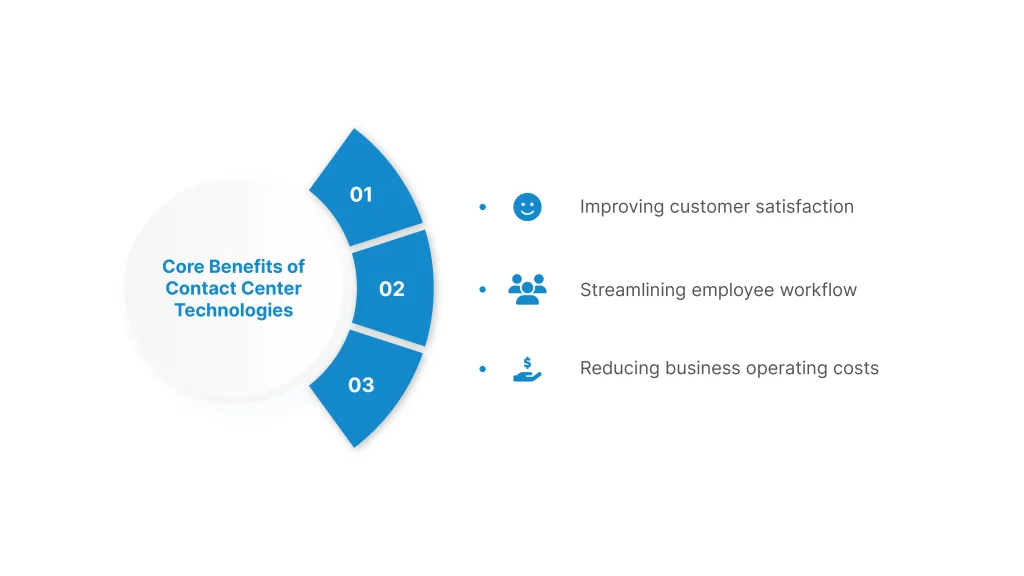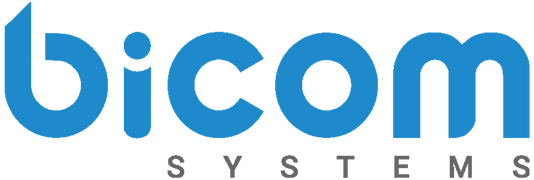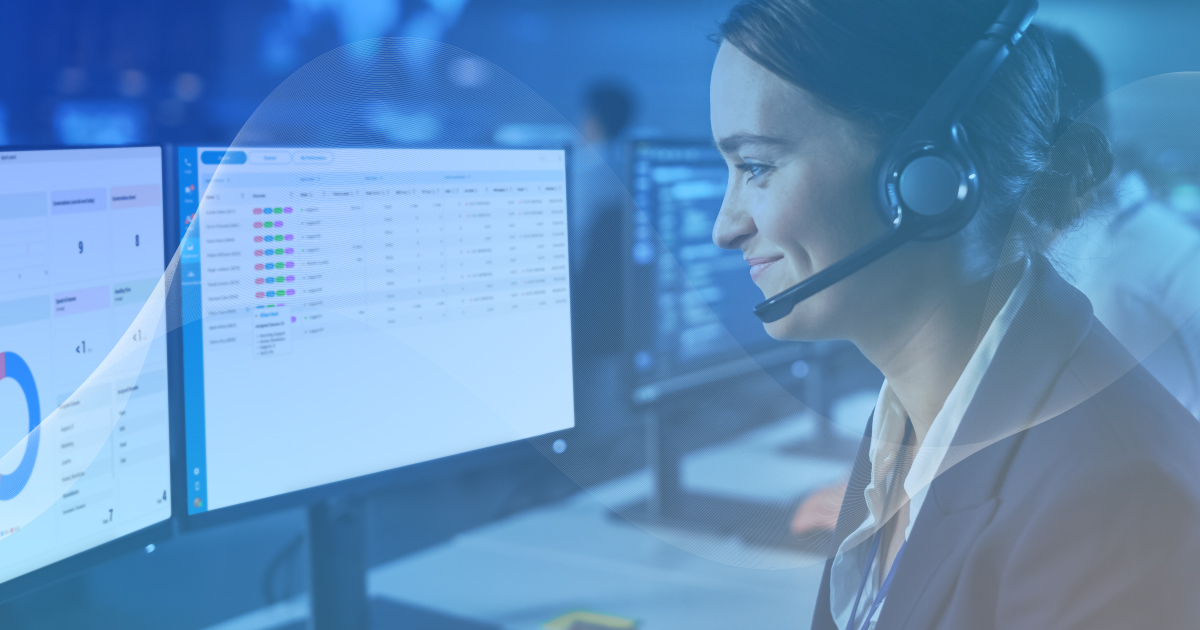The main goal of a contact center implementation into a business is to boost its customer service offer regardless of its functionality within the business infrastructure.
In order to achieve this, a number of different technologies have been developed to improve on the contact center’s ability to deliver the desired level of customer interaction and bring about an overall increase in customer satisfaction scores.
The amount of these new technologies can be staggering and businesses can get lost in trying to figure out which of these are crucial for their operation and which ones are not.
That is why it is important to make a clear distinction between them, to highlight the most important ones and know what purpose they serve.
It is what we are here to find out today, so let us begin.
What Are Contact Center Technologies?
Any form of software that helps improve the base contact center functionality.
Put simply, a contact center technology is any form of software that helps improve the base contact center functionality, be it making the work of an agent more streamlined or making it easier for customers to get their queries resolved without having to wait in long lines.
Each contact center technology aims to improve the customer experience, but it also comes with an added benefit to the agents and the business on its own.
The streamlined workflow allows agents to focus on the customer and not the tedious busywork they would normally have to be doing on top of that if they had no added assistance.
These technologies also help offset operating costs for the business and allow better allocation of their resources, facilitating further business growth.
The Most Relevant Contact Center Technologies

With the importance of these CC technologies explained, let us delve into the individual ones and see what sort of benefits they provide contact centers, businesses and customers as a whole:
1. VoIP
VoIP (Voice over internet protocol) is what enabled the transition from call to contact center in the first place, providing customers with new ways to reach the business than just through a phone.
Not only that, but it is also the foundation for the many technologies that were enabled thanks to it, enhancing the overall customer experience by proxy.
2. Automatic Callback
During days of high traffic at the contact center, it is not uncommon for customers to face large queues and lengthy hold times.
Automatic callback aims to remedy that by allowing users to choose the option to drop the call without losing their spot in line and have the contact center call them back when it is their turn to get served.
This eliminates the tedium of having to keep the line busy in case customers are expecting other important calls in the meantime and does not chain them to their phone, allowing them to go about their day without dampening their productivity.
3. IVR
Also known as interactive voice response, IVR has greatly aided in reducing traffic congestion in contact centers and has partly contributed to delivering customers to the appropriate specialists.
In simpler terms, it is the automated system that customers will encounter in most contact centers before they are directed toward a specialist.
This usually consists of several automated messages that form a decision tree and ask for customer input to better identify the nature of their problem and later route them to the proper department.
Aside from that, the system can also serve as a way to update customers on ongoing maintenance or deliver news about specific service outages due to outside factors.
Additionally, it can also provide customers with a set of simple FAQs which can help resolve some of the more mundane and commonly occurring issues and allow customers to resolve them without even needing to be put in a queue.
Apart from the already mentioned reduced queue congestion due to this level of self-service, it also allows agents to focus on more complex problems which do require their full attention.
4. ACD
Automatic call distribution is the next piece of the puzzle that helps intelligently route customers toward the appropriate agents for their inquiries.
It is the technology that takes over once IVR has finished gathering the specific inputs that it had taken from customers at the start of the call and operates based on rules set by their input.
These two technologies working in tandem allow for a smooth customer experience during the initial call and increased satisfaction due to being paired with the proper agent right away and rarely ever requiring a call transfer.
ACDs can utilize additional rules outside of the ones provided by the IVR, the most common one being prioritizing customers based on issue severity or the customer’s status within the company based on prior interaction/package, among others.
The Contact Center solution from Bicom Systems offers enhanced functionalities with added rules and penalties to make the distribution process even more precise than it normally would be.
5. Omnichannel
Omnichannel opens the way for a whole new branch of customers to interact with the business and add valuable insights.
The main appeal of a contact center is providing customers the ability to contact the business in question through a number of different avenues, allowing them to opt for their communication channel of choice.
The idea of omnichannel covers every currently available communication channel, (phone, emails, live chats, social media, SMS and similar).
It allows for further personalization of the customer experience and automatically improves customer to agent interaction by giving customers a comfort pick that would lead to less frustration than an alternate form of communication.
It also opens the way for a whole new branch of customers to interact with the business, adding valuable insights that will serve to further enrich CX in the future.
Bicom Systems’ own Contact Center solution has developed their own omnichannel that is a prime example of this incredible technology put to use.
6. Universal Queuing
With the addition of new ways of communication, the call queuing system also needed a touch-up which is why it has evolved into universal queuing.
This contact center technology takes incoming customers from every available communication channel and pulls them into a singular waiting list. This helps remove the need for the business to create specialized departments for each individual form of communication, reducing confusion and resource utilization inefficiency.
7. CRM
One of the most beneficial technologies in a contact center’s arsenal is CRM (customer relationship management) software.
It helps record customer data from prior interactions that helps agents build better relationships with them and make future exchanges more comfortable for both sides, making said exchanges both easier and faster to resolve.
8. CTI
Also known as computer telephony integration, CTI is the contact center tech that allows telephone systems and computers to function together, empowering agents to use PCs to manage calls, making the process more streamlined and easier to handle.
The use of a PC enables integration of technologies that would otherwise be unavailable if customer interaction was handled solely over a phone.
One of the key ones is screen pop, a tech that interacts with the contact center’s CRM once the customer is recognized, bringing all of their recorded data up on screen.
This allows the agent to lead the call without needing to rummage through files, saving time and improving customer handling time.
9. WFM
Workforce management software provides supervisors with insight into the number of interactions the contact center goes through at any given time, allowing them to optimally allocate agents across the day so that the contact center is never understaffed.
10. Predictive Dialer
Helpful for outbound contact centers, predictive dialers dial lists of contacts and automatically exclude those that lead to invalid ones.
These usually refer to calls that fail to deliver, be it ones that are not in use, that do not answer, that transfer directly to voicemail or that are currently busy, trimming the list in the process.
However, with the inclusion of multiple communication channels, the functionality of the predictive dialer now extends to them too.
This helps greatly expedite the whole process by allowing agents to only connect to successful calls instead of having to deal with the failed calls themselves, enabling them to go through a greater number of valid numbers in a day.
11. Chatbots
Another contact center technology which has greatly improved customer handling time is the inclusion of chatbots, allowing customers to get answers to their queries even outside of the business’s working hours through self-service portals.
As the name implies, they are most often used in chats and provide answers to some common issues and FAQs that should help deal with said issues.
12. AI And Machine Learning
The growing trend of AI has seen a wide number of applications in telephony, helping eliminate some of the tedious busywork, making the lives of contact center agents easier and empowering them to direct their full attention to the customer.
The most prevalent use cases for AI surround general automation of information delivery and call distribution and improving analytics by adding new customer insights like their emotional state through sentiment analysis.
This contact center technology is also being used to improve existing chatbots to make them more versatile and responsive to customer inquiries, providing a more human-like response which customers respond better to.
It can even be utilized in customer security by acting as a voice detection tool to prevent cases of potential fraud and identity theft.
While not perfect yet, there is no doubt that further research into the field of machine learning and AI will start yielding even more AI-assisted contact center technologies with time.
13. Performance Metrics
Analytics are the core of agent improvement and overall business growth.
Having access to some sort of performance tracking technology for both agents and the contact center as a whole is crucial, allowing supervisors to analyze the data and detect potential pain points that need improvement.
The most important thing is that these metrics are intuitive and easy to read, qualities that perfectly describe Bicom Systems’ own Contact Center analytics tools.
14. Call Recording
Another important contact center technology that helps improve future customer interactions and improve agent quality is call recording.
As simple as the name implies, this tech records calls between agents and customers that supervisors can review and analyze in case of customer complaints or to simply see where an agent might be struggling and offer insights on how to improve their work.
Embracing Technology
The benefits of CC technology are vast and have helped to evolve call centers into the contact centers that they are today.
Not only do they help improve the customer experience but they also help automate minor tasks for agents and allow them to focus on improving customer interaction and call handling times.
However, it can be tough to find a contact center solution which offers a good number of these options.
Bicom Systems’ Contact Center covers a large number of key contact center technologies with special care taken to tailor the interactive ones to be intuitive for both customer and agent alike.
Be sure to give it a look and to contact us in case you have any questions of your own.

